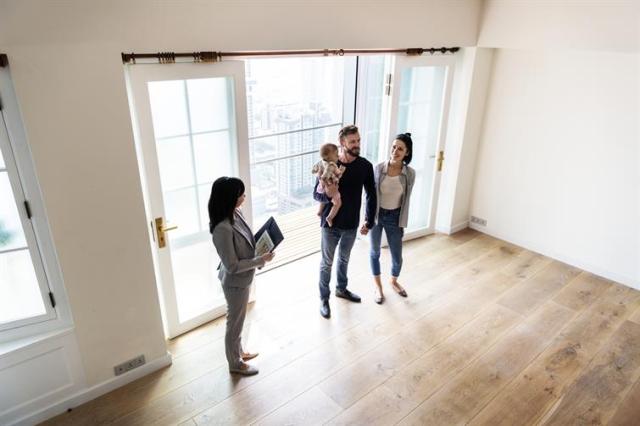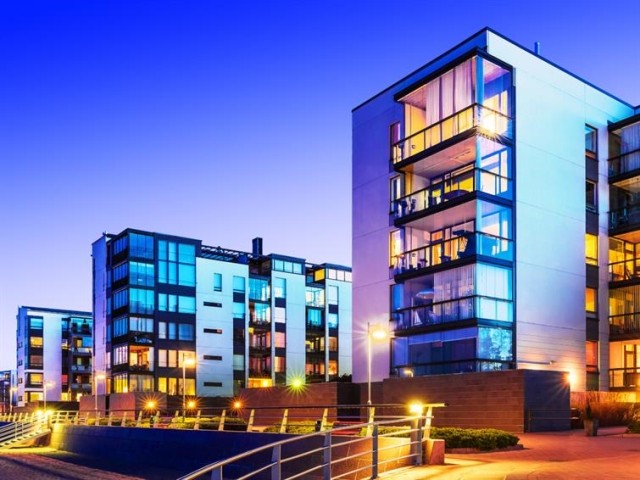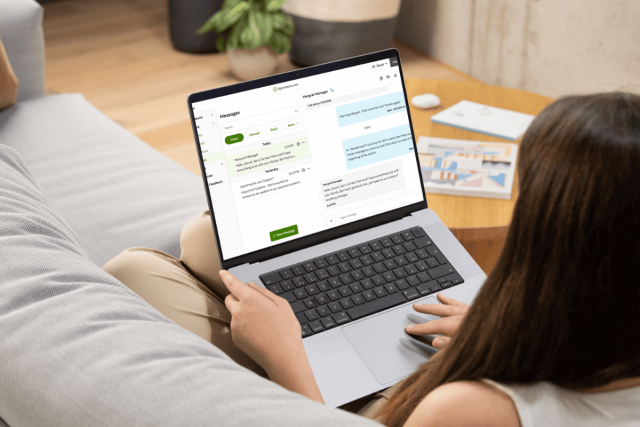Apartment tours are an exciting and necessary step in the apartment hunt. You wouldn’t buy a car without taking a long, hard look at its interior (and exterior), so give your apartment the same scrutiny. You’ve narrowed it down to your top choices and are ready to see the units and apartment communities in person. No more online searching and scrolling through images and reviews (things are getting serious). It’s time to see your potential new home face-to-face—or face-to-wall?
Many renters aren’t sure how to get this process going. First, you need to set up an apartment tour (also called an apartment viewing).
How to set up an apartment viewing
Get the leasing office’s phone number from the apartment community’s website and make the call during normal business hours—their hours will also be on the site. You will contact the landlord, property manager, or leasing agent (or whoever picks up the phone).
Give this person your name, phone number, and what floor plan, apartment type, or specific unit you’re interested in viewing at this property. During this phone call, we suggest confirming the rent price you’ve found listed online and the apartment availability, security deposit, application process and fees. They’ll likely tell you a few of their basic requirements for renting to not waste either of your time if you don’t fit the criteria.
If you are pleased with the answers, confirm a tour time for the apartment. Verify the time and meeting spot (typically the leasing office) and be sure to show up promptly (or cancel in a timely fashion). And remember—always dress for success. After all, landlords, property managers, and leasing agents—let’s just settle on calling them “apartment tour guides”—often have multiple renters interested in a unit, so it’s important to make yourself appear the best candidate.
Tours can last anywhere from twenty minutes to two hours—it depends on how much there is to see, how much you want to see, how much time the apartment tour guide has set aside, and how thorough you want your inspection of the apartment to be.
Questions to ask during the tour
You asked the basic questions about the apartment during your introductory phone call to set up the tour. But now that it’s time to visit the property, you’ll need to come prepared with any questions related to the unit, apartment community, policies, amenities, etc. And just to be sure you don’t forget anything, let’s review some important items.
For instance, you’ll want to consider asking about:
- The length of the lease.
- Their subletting policy.
- Any additional fees or deposits (other than the application fee and security deposit).
- If you have a pet, ask about the pet policy.
- If utilities are included. And if so, which ones?
- How to file maintenance requests.
- If the apartment is pet-friendly. And if so, are there additional deposits, fees, etc.?
- Parking—is it limited, assigned, or a free-for-all?
- Storage unit availability (for bikes, extra furniture, etc.).
- Is renters’ insurance required?
- Is there a guest policy?
- Location of the mailbox and the leasing office’s policy on receiving/holding packages.
- Any special discounts or move-in offers.
Try not to bombard the apartment tour guide with questions—but don’t be afraid to get your questions answered. You don’t want to leave anything to chance regarding an important decision such as choosing your new home.
Apartment inspection checklist
Apartment inspections are typically reserved for after you move in or out—but they don’t have to be. It may not be an official inspection during your tour—but you should treat it as one! This inspection isn’t for the apartment management but rather a personal inspection to see if this is the right apartment for you.
Too often, renters get caught up in looking at the model unit that is usually shown during an apartment viewing. The model unit is picturesque with its kitchen décor, decorative pillows, and perfectly made bed, but it’s not reality. Always ask to see the actual unit you are interested in renting.
Just because the model unit is perfect doesn’t mean that your unit will be. Unless the apartment building, you’re moving into is still being built or renovated, and your potential unit is not ready yet, there’s no reason you shouldn’t be able to see the specific apartment you’re looking to rent.
Once you’re in the actual unit, it’s time to get down to business. You don’t want to be overly obsessive about the inspection, but don’t be afraid to poke around to see what works and what doesn’t.
There are obvious things to look out for, such as poor carpet condition, marks on the walls, broken blinds, and scratched-up doors and moldings. But even if the floors, walls, blinds, and doors are in great condition, there could still be potential damage or issues hidden below the surface. After all, a professional carpet cleaning and a fresh coat of paint can disguise what lies underneath quite well. When you’re touring the apartment, here are a few things to look out for:
- Any sign of pests—rodents, roaches, ants, etc.
- Check for safe and functional electrical outlets.
- Check for a safe and functional circuit breaker box—you’ll want to know where this is located, especially when your blow-dryer trips the breaker and goes out mid-blowout.
- Check for functioning smoke detectors.
- Check for a fire extinguisher under the kitchen sink.
- Turn all light fixtures on and off, as well as ceiling fans. Check that they’re properly installed and not hanging by a thread (not an actual thread—but you catch my drift).
- Test the thermostat. You don’t want to move in without AC during the summer or heat during the winter—make sure the room feels the same temperature that the thermostat is set to.
- Check that the stove and oven both turn on properly.
- Open the refrigerator, freezer, and kitchen cabinet or two to ensure everything opens and closes without fault.
- Check for leaky faucets (or pipes under the sink). There’s nothing worse than storing your clean towels under the bathroom sink after move-in, just to find them covered in residue from leaky pipes the next day.
- Make sure your phone has service.
- Flush the toilet to make sure it flushes and isn’t wasting water by continuously running.
- Run some water in the shower/tub to see if the showerhead leaks, what the water pressure is if the tub is stopped up, and if the tub properly holds water when the stopper is on.
- See that all locks are up to code—both interior and exterior.
Take note of any potential issues
After you’ve made note of any potential issues (something that would keep you from happily moving into the apartment as-is), it’s time to bring your list to the tour guide. Don’t be afraid to share any concerns you have about the condition of the apartment. If you go ahead and tell them what needs to be fixed before you’d consider moving in, it’s one less thing you’ll have to worry about after you’ve settled into your apartment.
When you receive a move-in inspection sheet on move-in day (if you choose the apartment and if the management agrees to your requests), you’ll spend a lot less time nitpicking the unit, as well as a lot less time waiting for maintenance to fix any issues during the first few weeks after move-in. So, if you like an apartment but find concerns during the tour, bring them to the apartment tour guide’s attention so the issues can be fixed before you move in!
This way, you can simply take note of minor (non-maintenance) issues on your move-in inspection. These pre-existing issues would be things you wouldn’t want to be charged for when you move out (because you didn’t do them), such as nail polish on the bathroom floor, a stain on the carpet, etc.
If there’s one step you don’t want to skip out on during the apartment hunt, it’s the apartment inspection process during your tour and during move-in. Let’s make inspector gadget proud with our apartment inspecting skills!






